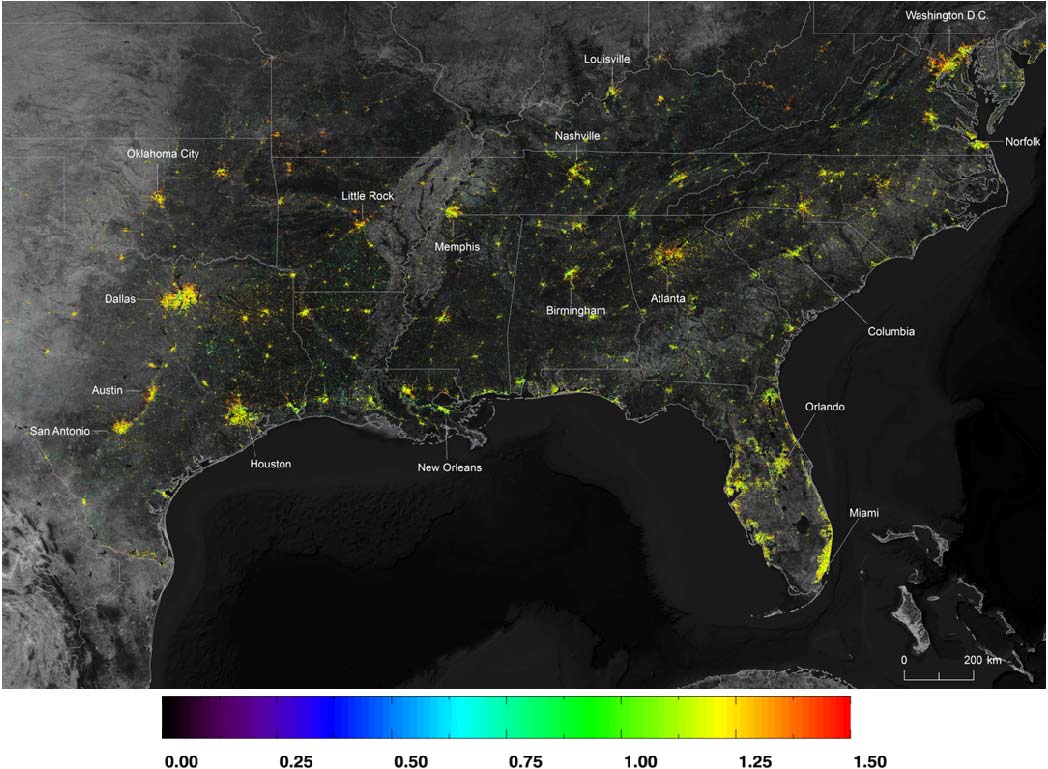Today we review research aimed at monitoring various cultural responses at the city or neighbourhood scale level in different societies to efforts to reduce electrical power use from carbon fuel sources. The authors made us of three years of daily high resolution satellite data which showed different usage patterns based on different religious holidays (such as Christmas among Christians and Ramadan among Muslins). There appears to be potential for application of this technique to observe human behavior response in other countries world-wide.

Key Quotes:
“most demand models lack basic contextual information on how dominant social phenomenon, the changing demographics of cities, and the socio-cultural setting within which people operate, affect energy decisions and use patterns.”
“Here we use high-quality Suomi-NPP VIIRS nighttime environmental products to:
(1) observe aggregate human behavior through variations in energy service demand patterns during the Christmas and New Year's season and the Holy Month of Ramadan; and
(2) demonstrate that patterns in energy behaviors closely track socio-cultural boundaries at the country, city, and district-level.”
“We processed 36 months of daily night-lights data, from early 2012 to late 2014, based on remotely-sensed estimates acquired from the Visible Infrared Imaging Radiometer Suite (VIIRS) Day/Night Band onboard the Suomi National Polar Orbiting Partnership (NPP) satellite”
“Accurate energy demand forecasting requires attention to the broader social contexts within which people operate, especially as these contexts change with globalization, economic development, and urbanization. We illustrate how the uniformities and variations between nighttime light signatures, as observed by the VIIRS instrument on Suomi NPP, can provide new insights into how energy behaviors, motivated by social incentives, vary across cultural boundaries.”
“individual factors such as poverty and irregular access to infrastructure services also affect energy behavior patterns, alongside macro-cultural forces.”
“A globally systemic assessment of these activity patterns will lead to improved understanding of neighborhood-level energy intelligence, as well as conservation strategies that can be tailored to specific communities and socio-cultural contexts.”



No comments:
Post a Comment